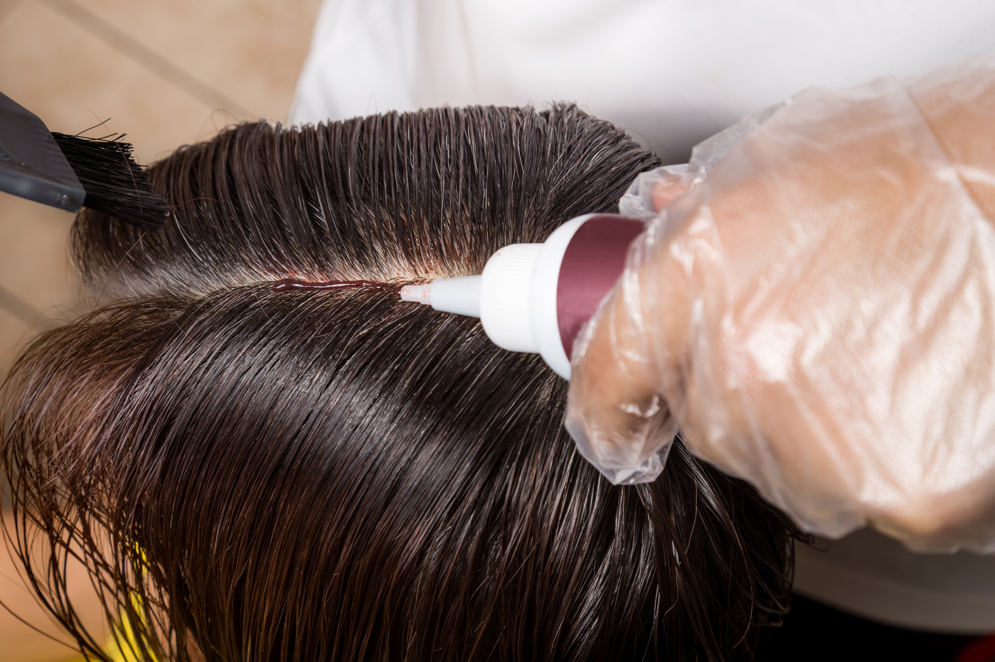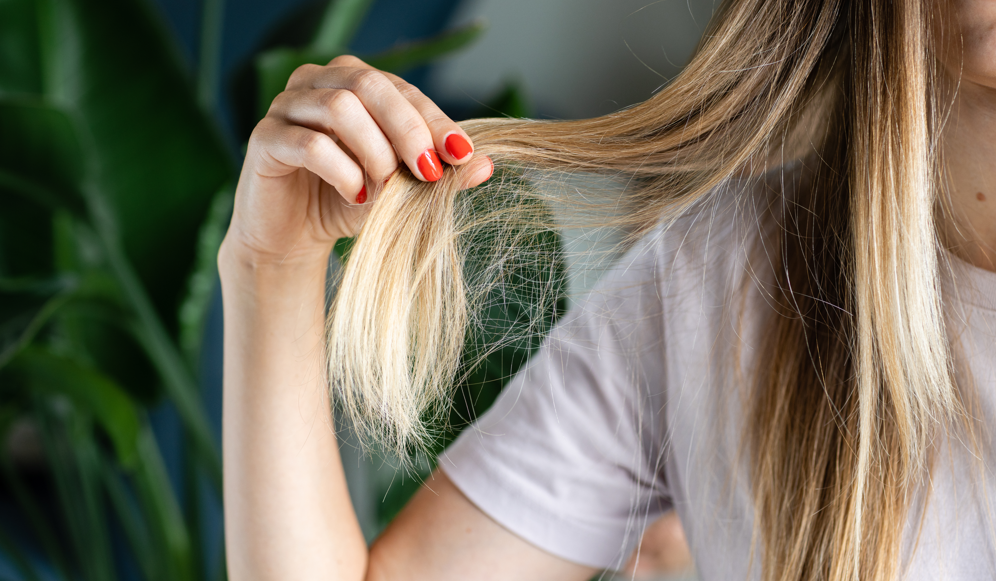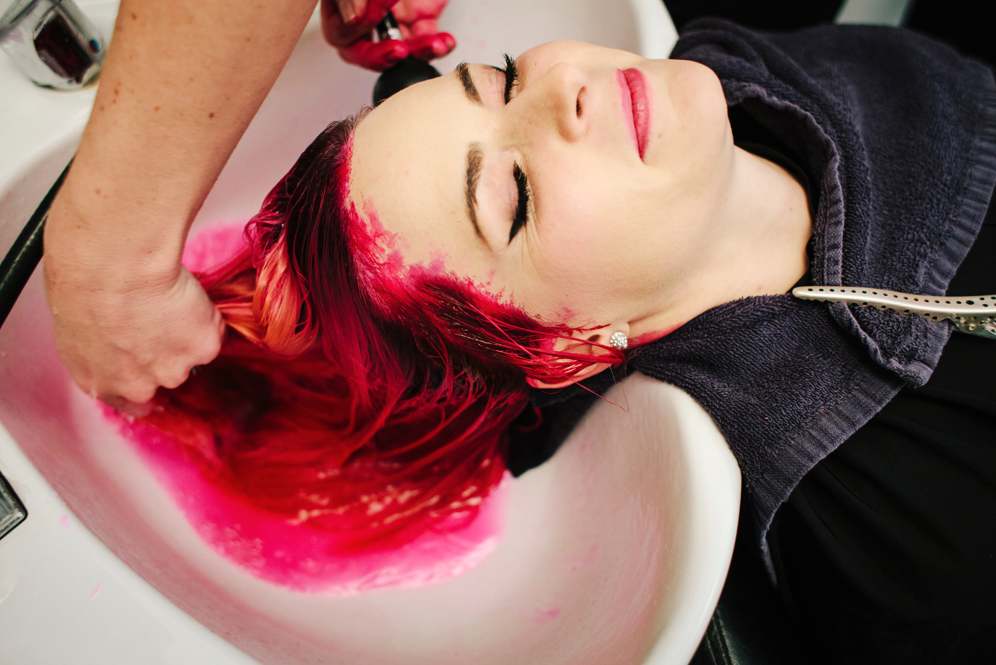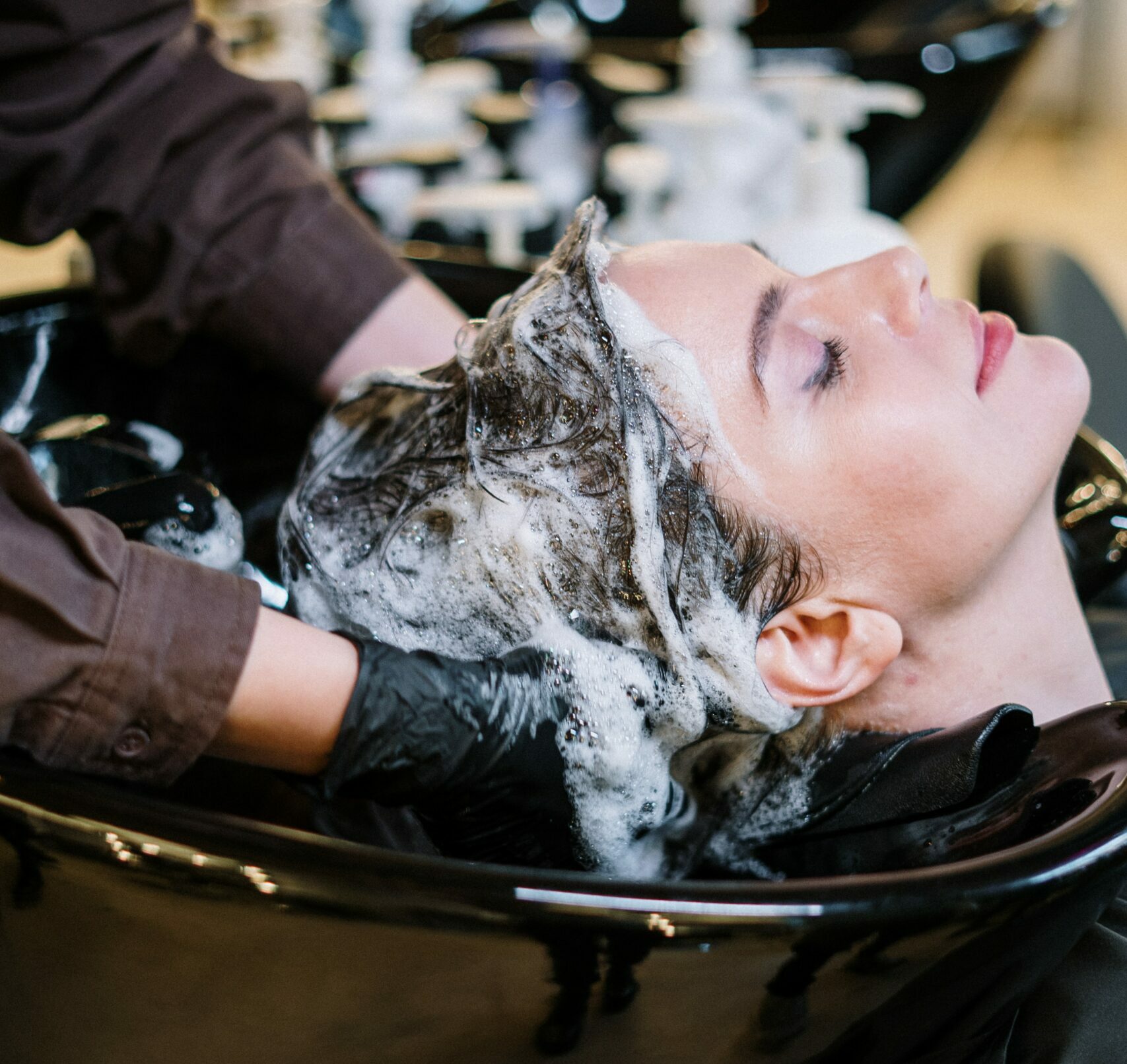I’ve been dyeing my hair ever since I was 10 years old. I know that shocks people when I say that, but it’s true. Since then, I dye my hair frequently — multiple times a year. And I know I’m not the only one. In fact, 48% of people dye their hair more than five times a year. If you’re one of those people, you understand that dyeing your hair at the salon is expensive. That’s why many people opt to dye their hair DIY.
Unfortunately, many people who dye their hair DIY lack the expertise to get the desired results. That’s why I commonly see questions and concerns, such as “how long to leave hair dye in for.” Here, I will answer all your questions about the length of time and hair dye, the dangers you may experience, what to do if your hair is damaged, and other common mistakes and things to consider.
Bottom line up front:
If you leave hair dye in for too long, you risk damaging your hair. That’s because some hair dye brands contain harmful ingredients that ruin the essential lipids and proteins found in hair. At best, you won’t get the desired results when you leave hair dye in for too long.
How Long Should You Leave Hair Dye in For?
You should always follow package instructions since certain brands require you to leave hair dye in for different lengths. I always followed package instructions when I dyed my hair and got good results.
Most brands have the same length of time for hair dye, which falls between 30 and 45 minutes. However, different factors can affect this. For example, I have thick hair and notice that my stylist leaves dye sit on my hair slightly longer than average. This may leave you asking if there’s a situation where you can leave in hair dye shorter or longer, which leads us to our next point.
Is It Okay to Leave Hair Dye in Shorter or Longer?
This usually isn’t recommended unless you fall under certain circumstances. That’s because the longer you leave in hair dye, the more likely it will damage your hair — especially if you leave bleach in for too long. Plus, if you’re allergic to any of the ingredients in the dye, you’re likelier to get a reaction.
In most cases, leaving hair dye in longer is pointless. That’s because hair dye has an activation period. If you leave the dye in too long, there’s a chance the hair dye may not work at all.
What if you don’t want to leave your hair dye in for the complete length of time that the box recommends? I also don’t suggest doing this. If you don’t leave your hair dye in long enough, it may not fully develop. This means the dye may not change your hair color or you won’t get the desired results. If you’re concerned that the color will be too dark, dilute the dye with a white conditioner.
Dangers of Leaving Hair Dye in Too Long
If you leave hair dye in for too long, you’ll experience no effects at best. But depending on the dye you use, you may experience hair damage or a worse allergic reaction. You may also not get the results that you want.
Hair Damage
Hair dye contains ingredients that can strip your hair of essential lipids and proteins, which can impact your hair’s health. When you leave the hair dye in for too long, the dye can absorb all of the essential moisture in your tresses. This can result in dryness and hair breakage. Some hair types are more prone to damage than others, which I will discuss later in the article.
Harmful Ingredients in Hair Dye
While there are hair dyes out there that don’t contain damaging ingredients, most hair dyes do contain properties that are harmful to your hair. These harmful ingredients include:
- Para-Phenylenediamine (PPD)
- Ammonia
- Resorcinol
- Titanium Dioxide
Why am I mentioning these ingredients? When you leave these ingredients in your hair longer than the recommended amount of time, the likelier it is that you will experience irritation and even an allergic reaction. This is especially true for ingredients such as PPD and resorcinol. Some ingredients, such as ammonia, can damage hair if left on for too long. Titanium dioxide is a carcinogen, so this is an ingredient you’ll want to avoid altogether.
Results
At best, you won’t get the desired results when you let your hair dye in for too long. For example, your color may appear darker or lighter than expected. If you’re dyeing your hair an unnatural color, the shade may become more intense. Still, the dye only activates in a certain timeframe, so the color shouldn’t be too drastically different compared to the box.
Things to Consider When Dyeing Your Hair
Before dyeing your hair, there are some facts you’ll want to consider. The dye you choose should depend on your preferences, your desired look, and your hair type.
Type of Dye
There are two main types of dye:
- Permanent
- Non-permanent (semi and demi-permanent)
The main difference between the two dye types is how the pigment is deposited. With permanent dye, the pigment is deposited into your entire hair shaft to change your hair color. Because of this, permanent dye has more chemicals. Leaving permanent dye on your hair for longer can cause the most noticeable effects. You may notice less-than-perfect results, damaged hair, and even an allergic reaction.
Non-permanent dyes only deposit color on the outside of the hair shaft. Because of this, these dyes usually don’t contain the harmful chemicals that permanent dye has.
It’s still best to follow the package instructions for the best results. But if you lose track of time and leave the dye in for too long, your hair won’t be severely damaged. I know some people who accidentally left on semi-permanent dye, like Manic Panic, for slightly longer than the package instructions. They just told me the dye dried on their hair and was difficult to wash out.
Color
How long you leave in your hair dye also depends on the color you get. For convenience’s sake, I will only mention natural hair colors and not unnatural shades.
In short, the darker the dye, the easiest it is to apply. I’ve always known this fact, so I’ve only dyed my hair black DIY. Black hair dye can still contain toxic ingredients. But since it’s the darkest hair color, it likely won’t cause any hair disasters except for dyeing your hair a darker shade of black than what you wanted.
You may feel compelled to leave red hair dye in for longer. That’s because red hair dye doesn’t take well to all hair types. Understand that leaving red hair dye in for longer won’t benefit you. At best, your hair may turn a darker shade of red than what you wanted.
What about blonde hair? It depends on your base color and the dye you use. If you’re bleaching your hair to achieve platinum blonde, follow all directions to a T. If you leave bleach in for too long, it can destroy your hair. I would just go to my stylist for all bleaching jobs. If you’re blonde and are dyeing your hair a darker color, like bronde, I would follow the advice I mentioned for black dye.
Hair Thickness
You may feel compelled to leave your hair dye in for longer if you have thick hair. You may think that leaving the dye in longer will ensure the dye will activate for every strand. Many people with thick hair are also concerned about their dye looking uneven and patchy.
If these are your concerns, I would call the company and ask if they recommend leaving the dye in for longer. In some cases, you may need to process dye longer on thick hair. But I wouldn’t chance this without first speaking to the brand.
Leaving hair dye in for longer than recommended can result in damaged hair, regardless of your hair type. I naturally have thick hair, and I’ve definitely suffered hair damage before from hair dye. I also followed all package instructions when dyeing my hair and always had beautiful results.
Porosity
Hair porosity is your hair’s ability to absorb and retain moisture. This also depends on the way your hair absorbs dye. Even if your hair is porous, your hair will still absorb the dye. The problem is the dye may not last as long. But don’t think that leaving the dye in for longer will result in long-lasting color. I’m reading the opposite — your color will wash out quicker.
How can you find out the porosity of your hair? It’s easier than you think. Take a strand of hair and place it in a glass of water. If the strand floats to the top of the glass, you have low porous hair. If the hair sinks, you have highly porous hair.
What Should You Do If Your Hair Is Damaged
Let’s say you dyed your hair DIY, you left the dye on for too long, and now your hair is damaged. What do you do?
See a Professional
The first thing you should do is see a professional hairstylist. Yes, spending the money to have a professional fix your hair will sting. However, a professional is the best person to restore your hair back to normal — or at least almost normal. The best stylist will apply different treatments to restore collagen and protein. These ingredients are vital to repair your hair. After coming back from the salon, your hair will feel smoother, silkier, stronger, and shinier.
There are other reasons to see a professional. The dye likely hurt your ends more than anything. Getting a trim will cut off those split and damaged ends. When your hair grows back, it will look healthier.
If you left the dye on your hair for too long and the color looks less-than-perfect, your stylist will likely re-do the color. You can always bring the packaging to your appointment so the stylist can see the look you want.
Repair Damaged Hair
After a stylist corrects the hair dye damage, you’ll want to take measures to repair your damaged hair. Your hair is likely fragile and weak, so you’ll have to take nurse your hair back to health.
Here’s what I did when my hair was damaged after I dyed it:
- Avoid using heat styling. Wash your hair at night to refrain from blow drying in the morning.
- Use nourishing hair products
- Get regular trims
- Use a gentle shampoo
I also suggest wearing a hair mask. You can find these products at all price points, and they saved my hair.
The food you eat will also impact your hair health. Make sure you get healthy sources of protein and essential fatty acids. As stated previously, your hair needs protein to support and rebuild itself. Some research shows that omega-3 fatty acids improve hair thickness and expedite hair growth, though more studies need to be done to confirm this. Certain vitamins, such as Vitamins B and C, prevent hair thinning and shedding. It’s also important to drink enough water every day.
Other Common DIY Hair Dye Mistakes
Leaving the dye in for the incorrect amount of time is not the only mistake that you can make. I’ve made mistakes when dyeing my hair DIY and learned a lot. Here are some mistakes that I made and other common ones I see all the time.
Dyeing Your Eyebrows
I never dyed my eyebrows before, but I have friends with eyebrow dye horror stories. First, I don’t recommend DIY brow dyeing in the first place. If you want to change the color of your brows, go to a professional. There are various plant-based dyes that are safe for the eye area.
If you’re adamant about dyeing your eyebrows DIY, I suggest using a product that’s made for the brows. Only dye one eyebrow at a time. Put a little bit of dye on a Q-tip. Start at the outer corner and work the Q-tip to the inner corner. Try not to get any dye on your skin. Leave the dye on for the recommended amount of time, which is usually 5-15 minutes. To remove the dye, use another cotton swab and soak it in water. Run the swab against your brows.
You Radically Change Your Hair Color
When you get a new hair color, the new color should be no more than two tones darker or lighter than your base color. Even stylists use this as a guide; I have naturally dark hair, and when I wanted bright colors, my stylist slowed the bleaching process to lighten my hair only a couple of levels at a time.
Why shouldn’t you radically change your hair color, even at a salon? The answer is simple — dramatic hair color changes are likelier to damage your hair. But even if a dramatic hair color change is your goal, this is still best handled by a professional.
You Don’t Follow the Instructions
When dyeing your hair DIY, it’s integral that you follow the manufacturer’s instructions. Following instructions not only ensures that you’ll minimize the risk of damage but that the color will come out vibrant. Even if you get the color you want, not following instructions can make the dye fade faster.
Only Using One Color
When I dye my hair black DIY, I love the natural yet gothy results I get. But I still prefer the results when my stylist dyes my hair black. I found out she mixes a unique dye for me that matches my undertones. No matter what color you use, you should be mixing dyes. That’s because your hair will look multi-tonal as if you walked out of a salon. Plus, multi-tonal hair looks natural. Your natural hair color is never one solid color; some strands may be darker, lighter, or even on the warmer or cooler side.
You can mix many hair dye colors, but don’t mix hair dye from different brands. If a hair dye brand doesn’t say you can mix colors, I would contact them and ask.
You Over-Dye Gray Hair
When your hair turns gray, the cuticle becomes thinner. This leaves hair feeling fragile, dry, and coarse. That’s why you shouldn’t over-dye gray hair or if one-third of your hair is gray.
This doesn’t mean you can’t dye gray hair at all. Instead, use a semi or demi-permanent dye. These dyes are less damaging than permanent dyes and will leave your hair feeling smooth and looking shiny. If you are adamant about using permanent hair dye, I suggest doing a balayage. My stylist also dyes my mom’s gray hair, and she does a black and gray balayage. It looks amazing!
Which color should you dye gray hair? Stick to neutral shades, such as mushroom brown, soft blonde, caramel blonde, and light copper. These colors blend into gray and are easy to maintain.
But if you have premature grays (such as me, 30 years old with tons of gray) and you still want to do funky colors, then those semi-permanent unnatural colors are also a great option. First, if your whole head is a light silver gray, it’s a level 10. This means that your hair can pick up every single unnatural dye. Even darker gray hair is a level 7, which is the minimum level that most dye manufacturers recommend.
Plus, unnatural colors are more than just fun. They add dimension to your gray hair, especially if your gray color is dull and boring.
FAQs
Answer: Hair dye may contain harmful chemicals that can harm your hair and also your health. However, you can prevent damage by choosing a hair dye without harmful chemicals and going to a professional hairstylist.
Answer: I prefer going to a hairstylist. A licensed professional will know the right dye type for you, which minimizes the risk of damage and ensures you’ll be satisfied with the results. I also like having someone else apply hair dye for me. I’m always paranoid that I will miss spots and that my hair will look blotchy.
Answer: No matter if you DIY your hair or go to the salon, wait to wash your hair. I always wait a few days, but you should at least wait 24 hours. I also wash my hair every other day to increase the longevity of my dye.
Bottom Line
In all of my experience dyeing hair, the golden rule I learned is always to follow package instructions. That’s because every hair dye brand has different requirements; for example, some hair dye brands may require you to leave in your hair dye longer than others.
Regardless, never leave your hair dye in for too long. You’ll either experience no benefits, will have an irritated scalp, or the dye will come out differently than expected. But for most, the hair dye will damage your hair. Your hair is comprised of lipids and proteins, and the chemicals in hair dye can destroy these vital compounds.
I hope this guide helped you better understand hair dye and your own hair. If you’re still unsure about dyeing your own hair, I suggest going to a professional.
Looking for more interesting readings? Check out:
- Ombre Knotless Braids Ideas: Looks You Will Love - December 24, 2022
- How to Find the Best Lime Crime Unicorn Dye: Some Facts to Know about These Vivid Hair Coloring Products - December 11, 2022
- How to Find the Best Peach Hair Dye: Getting This Juicy Hair Color - November 14, 2022







